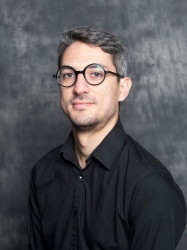Following a full year of curriculum and instruction challenges, it is fruitful to reflect on changes and adaptations implemented. This reflective process can help educators recognize what went well and what needs further development. In looking at the post-secondary orchestra curriculum in North America and drawing upon my current experience as the symphony orchestra director at Burman University (Alberta, Canada), I would like to share some of my recent realizations.
The Burman University Symphony Orchestra (BUSO) was founded in 2006 by violinist and former professor Naomi Delafield. It was designed as a foundational aspect of the music curriculum but, in wearing different hats throughout the years, the group started to face challenges regarding its core priorities and purposes.
Challenges range from inevitable and necessary logistics (such as assessing budget and resources) to quite peripheral elements (such as the recurrent need for obtaining parental consent, syncing family schedules for some of the underage members from the community, and juggling diverse maturity and commitment levels across the different demographics involved). Having to address purposes other than the training of music majors has often detracted these students from achieving their goals in a more direct and synergistic manner. They started to make the group feel less and less professionalizing for students enrolled in the music program.
Paradoxically, since we are a mixed community and student body, we completely depend on all of these members (and the different demographics they represent) in order to exist as an orchestra. We also need to continue existing to provide quality entertainment events on campus. Hence, at the same time as we have been compelled to review our priorities, we also need to strengthen these bonds with our community members.
When Covid-19 happened, we were suddenly faced with an additional factor; one that was beyond our control and beyond our expectations. Yet, this was not entirely negative for our group. This gave us a true opportunity to stop and reconsider our priorities during this difficult time and going forward. Due to Covid-19 restrictions there were some aspects of orchestra engagement that we had to eliminate from the course temporarily. There were other aspects that, in transitioning to remote learning, we had to prioritize. As our teaching time, meeting opportunities, and instructional resources became limited due to safety and government restrictions, our top priority became current paying music majors enrolled in our music programs. Our ability to train them in the best way possible needed to be our main concern.
I have since developed a two-stream orchestra course only for registered students of the university (shown in the image below). The focus on our actual current students over community members became an administrative priority for the entire institution.
Both streams are professionalizing and are open to music majors, while only the first is open to non-music majors. The first focuses on orchestral excerpts and a process of self-recording and feedback that recreates the famous “audition tape” combined with selected readings on the material. The second is an opportunity specifically designed for music majors to continue to play on stage albeit in smaller ensembles and performances, all while being trained in the auditioning process as well.
While we all miss the large symphonic group, it has been amazing to see the involvement of music majors and how much they truly value our focus on their needs during these trying times. This has also allowed for them to perform at a slightly higher quality level, since they are performing with other music majors and peers.
It is startling that it took a global pandemic for some post-secondary orchestras to reconsider and reconceptualize priorities based on music majors’ needs. I hope that as we leave this pandemic behind, we will be able to maintain this priority for our advanced students while balancing the need for university symphonic groups to function according to their multiple purposes.
Can college symphonic groups successfully address seemingly disparate multiple purposes while maintaining the focus on our music majors?

